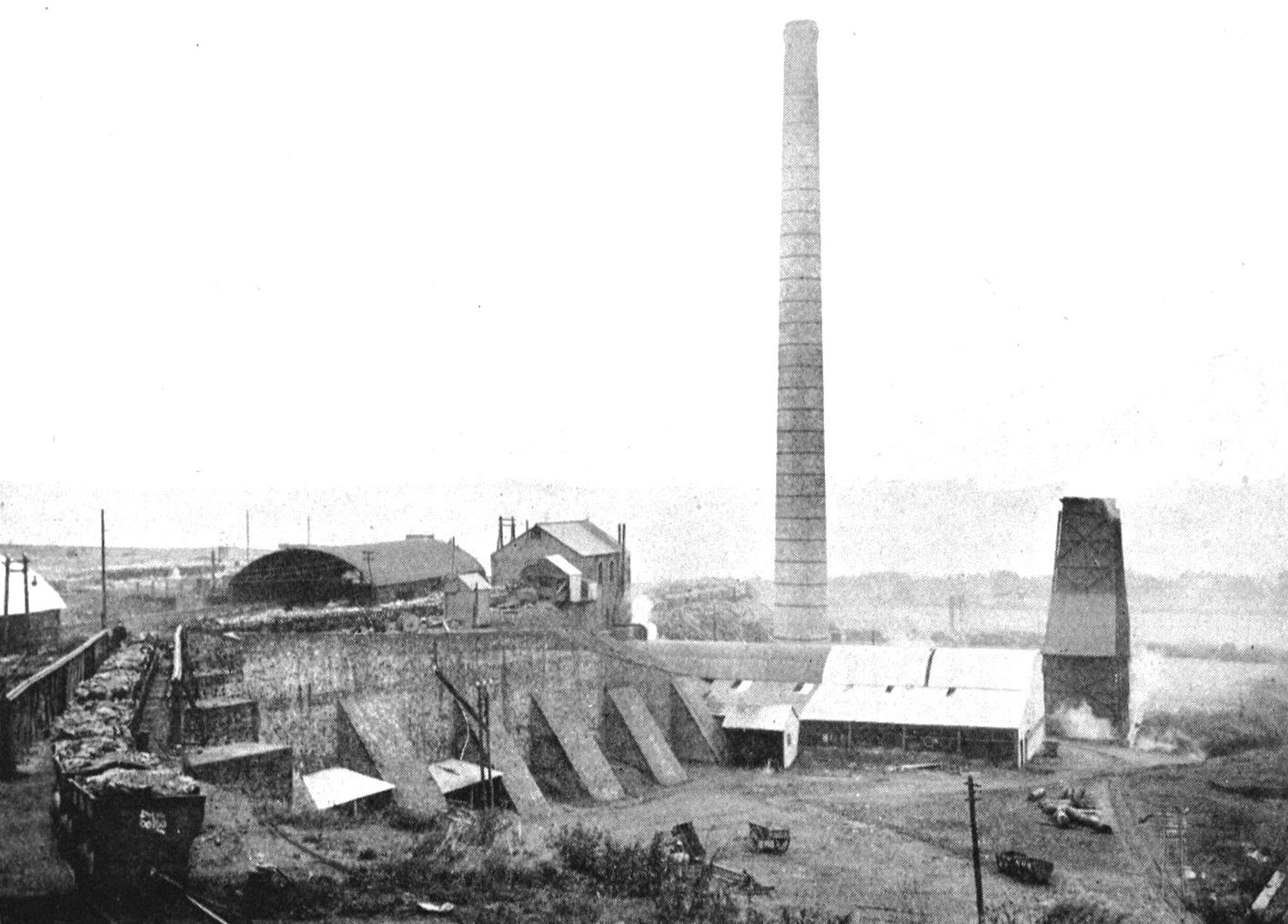Kenfig Hill (SS 8500 8485)
This mine was sunk in 1906 by Baldwyn’s Limited on the site of an older slant. It consisted of the Aberbaiden Slant driven to a length of 1,500 metres, and the Pentre Slant, sunk in 1908 and driven to a length of 1,900 metres. They worked an area of 5.5 square miles.
It was opened to work the No.3 Rhondda (Rock Fawr) seam which it found had an average thickness of; coal 24”, dirt 12”, coal 24”. This coal was generally classed as type 301B Prime Coking Coal for use at foundries and blast furnaces.
In 1934 Baldwin’s Limited was located at Baldwin House, London with the directors being; Colonel Sir William Charles Wright, Colonel John Beaumont Neilson, Sir Henry Beyer Robertson, Richard Sydney Guinness, Sir Thomas Williams, Sir Robert Waley Cohen, Colonel J.R. Stansfeld, J.C. Newman and Nigel Leslie Campbell. The Collieries Department was located at 45, Wind Street, Swansea. Baldwin’s later became Richard Thomas and Baldwin’s of steel-making fame and included Stanley Baldwin, a conservative prime minister, in the family.
They owned two mines; Aberbaiden and Pentre Slants which employed 1,240 men between them and Bryn Navigation which employed 849 men. In 1943/5 Aberbaiden was managed by I Thomas and was then owned by Richard Thomas and Baldwyn’s Limited. In 1943 the colliery employed 441 men working underground in the Rock Fawr and Hafod seams and 174 men working at the surface.
The colliery came under the control of the National Coal Board following Nationalisation in 1947 which placed it in the No.2 Area of the South Western Division. The manager in 1947/9 it was W.G. Davies. Out of the 600 men working at the colliery in 1955, 270 of them worked at the coalfaces, but by closure, this figure had dropped to 190 men on the coalfaces out of the 457 men employed.
When the closure of the colliery was announced, the local authority contacted the National Union of Mineworkers at London to express their concern over the loss of jobs, however, the NUM replied:
The National Executive Committee has had to accept that closures in the present circumstances must take place and are co-operating with the Board to ensure that the least possible hardship is placed upon the men affected by the closure.
Aberbaiden Colliery was closed by the NCB on February the 2nd 1959 on uneconomic grounds, and prior to closure the NUM South Wales Area carried out an in-depth analysis on the prospects of the men of both Aberbaiden and Pentre finding work in neighbouring pits.
Some of those that died working at this mine;
- 11/10/1912, Richard Kent, aged 41, collier, roof fall.
- 14/11/1912, Thomas Jenkins, aged 53, pumpsman, was run over by trams.
- 28/6/1913, David Williams, aged 28, collier, run over by trams.
- 15/7/1913, David Davies, aged 24, collier, roof fall.
- 18/2/1914, Frank Cecil Green, aged 26, labourer, roof fall.
- 28/10/1914, Job Williams, aged 44, collier, roof fall.
- 4/3/1925, W.J. Rogers, aged 42, collier, roof fall.
- 27/10/1925, W.G. Tarr, aged 45, repairer, roof fall.
- 1/2/1927, W.J. Thomas, aged 58, repairer, roof fall.
- 9/9/1927, Frederick Roach, aged 17, assistant collier, roof fall.
- 1/10/1927, G. Thomas, aged 33, rider, run over by trams.
- 21/11/1927, S. Jenkins, aged 22, banksman, run over by trams.
- 12/5/1928, W. Wiltshire, aged 56, collier, roof fall.
- 26/6/1928, Harry Eastman, aged 46, collier, roof fall.
Some Statistics:
- 1900: Manpower: 36.
- 1901: Manpower: 46.
- 1902: Manpower: 65. Output: 26,024 tons.
- 1903: Manpower: 93. Output: 29,038 tons.
- 1904: Output: 39,490 tons.
- 1905: Manpower: 194. Output: 45,558 tons.
- 1906: Output: 70,281 tons.
- 1907: Manpower: 202. Output: 80,828 tons.
- 1908: Manpower: 295. Output: 112,813 tons.
- 1909: Manpower: 259. Output: 180,930 tons.
- 1910: Manpower: 540 with Pentre. 227,585 tons.
- 1911: Manpower: 288. Output: 251,545 tons.
- 1913: Manpower: 600. Output: 290,897 tons.
- 1914: Output: 293,229 tons.
- 1915: Manpower: 700. Output: 306,146 tons.
- 1916: Manpower: 750. Output: 307,458 tons.
- 1917: Output: 327,168 tons.
- 1918: Manpower: 799. Output: 335,660 tons.
- 1919: Manpower: 750. All the above outputs are with Pentre.
- 1920: Manpower: 750.
- 1923: Manpower: 1,182. with Pentre.
- 1924: Manpower: 1,033 with Pentre.
- 1926: Manpower: 1,100.
- 1927: Manpower: 925.
- 1928: Manpower: 1,112.
- 1930: Manpower: 1,258.
- 1932/3: Manpower: 1,100.
- 1935: Manpower: 1,240.
- 1938: Manpower: 604.
- 1940: Manpower: 1,100.
- 1941: Manpower: 1,175.
- 1943: Manpower: 615.
- 1945: Manpower: 615.
- 1947: Manpower: 598.
- 1948: Manpower: 618. Output: 110,000 tons.
- 1949: Manpower: 634. Output: 110,000 tons.
- 1950: Manpower: 651. Output: 120,255 tons.
- 1955: Manpower: 600. Output: 108,327 tons.
- 1956: Manpower: 565. Output: 98,465 tons.
- 1957: Manpower: 537. Output: 82,464 tons.
- 1958: Manpower: 457. Output: 74,301 tons.
This information has been provided by Ray Lawrence, from books he has written, which contain much more information, including many photographs, maps and plans. Please contact him at welshminingbooks@gmail.com for availability.
Return to previous page

